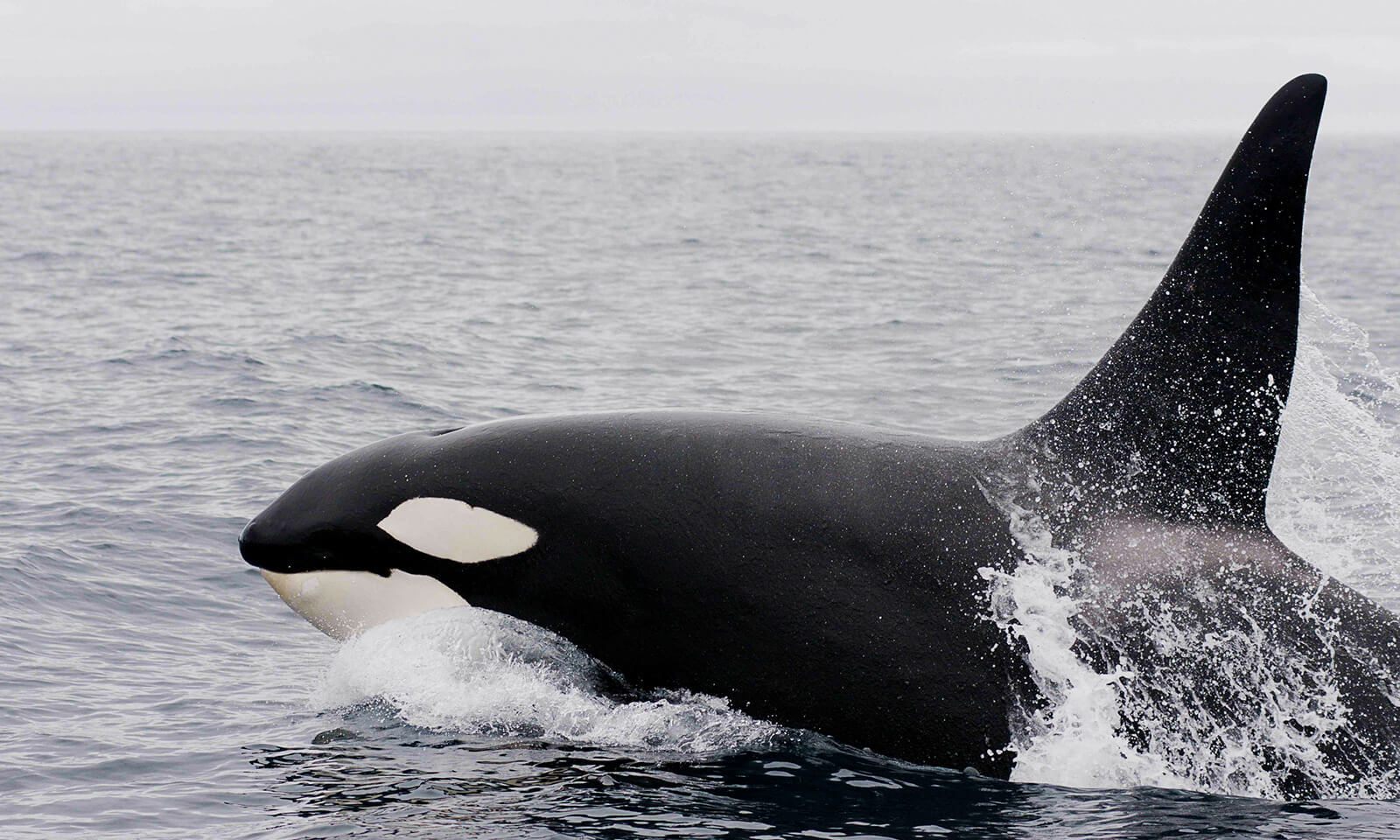
Southern Resident Killer Whales.
©Holly Fearnbach, NOAA
Factors impacting the Southern resident killer whale population along the Pacific
While all killer whales — or orcas — may look very similar, there are different types of orcas. In the North Pacific, three different species can be found: resident killer whales, transient or Bigg’s killer whales, and offshore killer whales. One of the most important distinctions is what they eat.
Even within the resident orcas, there are different populations. Northern, Southern, and Alaskan killer whales communities make up the North Pacific resident orcas and there are also Russian and Japanese resident killer whale populations. Northern and Southern resident orcas almost exclusively eat salmon, while Alaskan resident orcas eat different kinds of fish, including salmon, mackerel, halibut, and cod.
There are currently 74 Southern Resident killer whales, and this population is listed as endangered in both Canada and the U.S. This species relies on Pacific salmon (Chinook and coho) for food, however, these salmon populations have been decreasing along the northeast Pacific coast for decades. Previous research studies show that those declines could be attributed to several factors, including predation by growing pinniped populations, fishing, climate patterns, and the deterioration of freshwater habitats.
Following those population declines, there has been a reduction of the fishing activity of Pacific salmon since the mid-1990s along the coast. Most hatcheries have also increased the number of salmon they release.
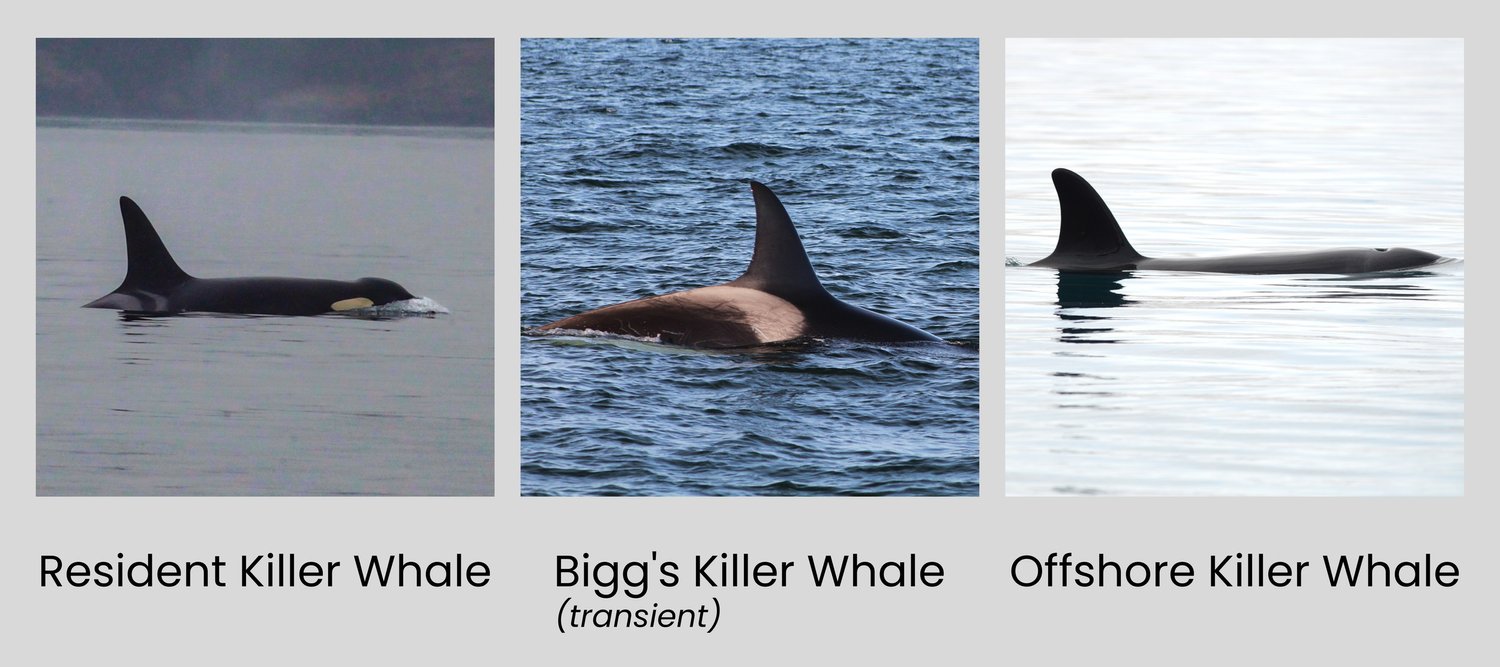
A recent UBC study published in PLOS ONE used ecosystem modeling to explore if the decline of Chinook and coho salmon could be due to more than one factor. It found that between 1979 and 2020, predation by marine mammals — mostly pinnipeds — could be a strong driver of the decline of Chinook salmon.
“Pinniped populations have been increasing for years, and there has most likely been substantial impacts of pinniped predation on Chinook salmon marine survival rates and numbers,” said Carl Walters, senior author and professor Emeritus at the Institute for the Oceans and Fisheries and Department of Zoology. “This, in turn, has affected food availability to Southern Resident Killer whales.”
The pinniped population along the Pacific coast has greatly expanded
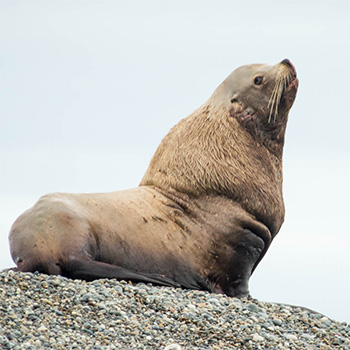
Steller sea lion
© Andrew Trites
For years, there were few regulations on hunting pinnipeds, and mass hunting by commercial sealing caused pinniped populations to decrease drastically in the 20th century. This prompted commercial sealing bans in all of North America — all of which remain to this day.
Following their protection, pinniped populations along the coast of British Columbia, Washington State, Oregon, and California have increased dramatically since the early 1970s. Three mammal species’ numbers specifically skyrocketed: harbor seals, California sea lions, and Steller sea lions.
The competition for food for pinnipeds and Southern Resident killer whales
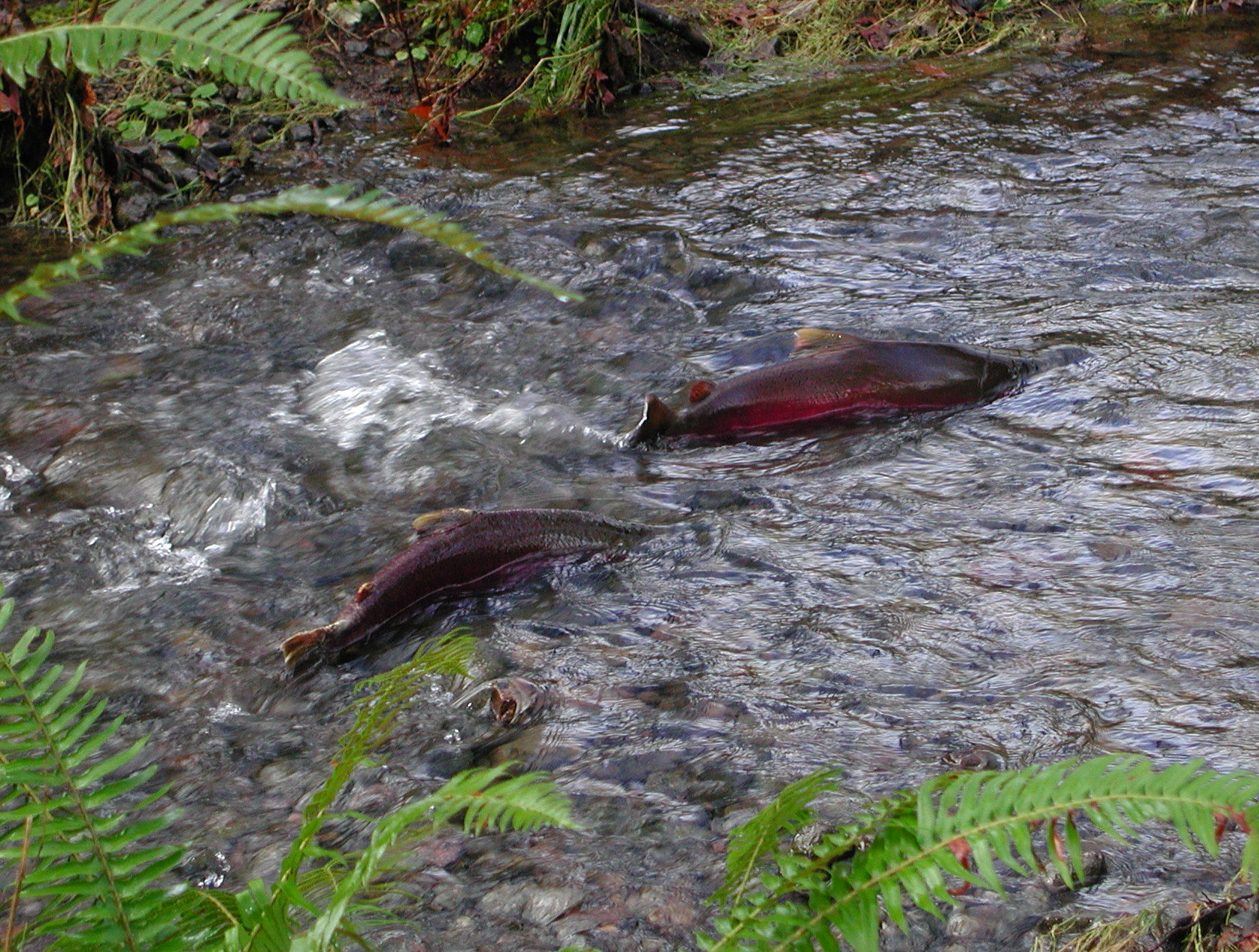
Coho salmon, Tillamook State Forest, Oregon.
© Oregon Department of Forestry
One of the goals of the study was to examine whether competition for food between marine mammals was impacting the Southern resident killer whale population. Because these killer whales are considered highly specialized predators, they are heavily impacted by any changes to the salmon population. Resident killer whales primarily feed on mature fish who are on their way to their spawning grounds, while harbor seals primarily target young salmon (smolts) entering the ocean for the first time. Steller and California sea lions target Pacific salmon through different life stages.
“It’s really interesting to look at the ecosystem as a whole and try to get a more holistic view of how the system works rather than focusing on individual factors,” said Fanny Couture, lead author and a recent PhD graduate at the Institute for the Oceans and Fisheries. “There’s just so many different interactions going on within this ecosystem that you need knowledge on more than just the species that you’re focusing on.”
The model predicted that in 2020, harbor seals may have consumed between 27 million Chinook salmon smolts in the Salish Sea alone, and up to 47 million coho smolts in one month. Even with hatcheries focusing on rearing salmon species for increased numbers in the wild, the hatchery environment cannot teach young salmon to avoid predators. This increases their chances of being eaten by pinnipeds and other marine mammals when they are released.
“While harbor seals and these killer whales don’t necessarily target Chinook salmon of similar ages, a dramatic reduction of survival in the early life could directly result in a lower number of adult individuals available to larger predators,” said Villy Christensen, co-author and professor at the Institute for the Oceans and Fisheries. “In this context, harbor seals could indirectly compete with killer whales by lowering the salmon available to the whales at a later stage.”
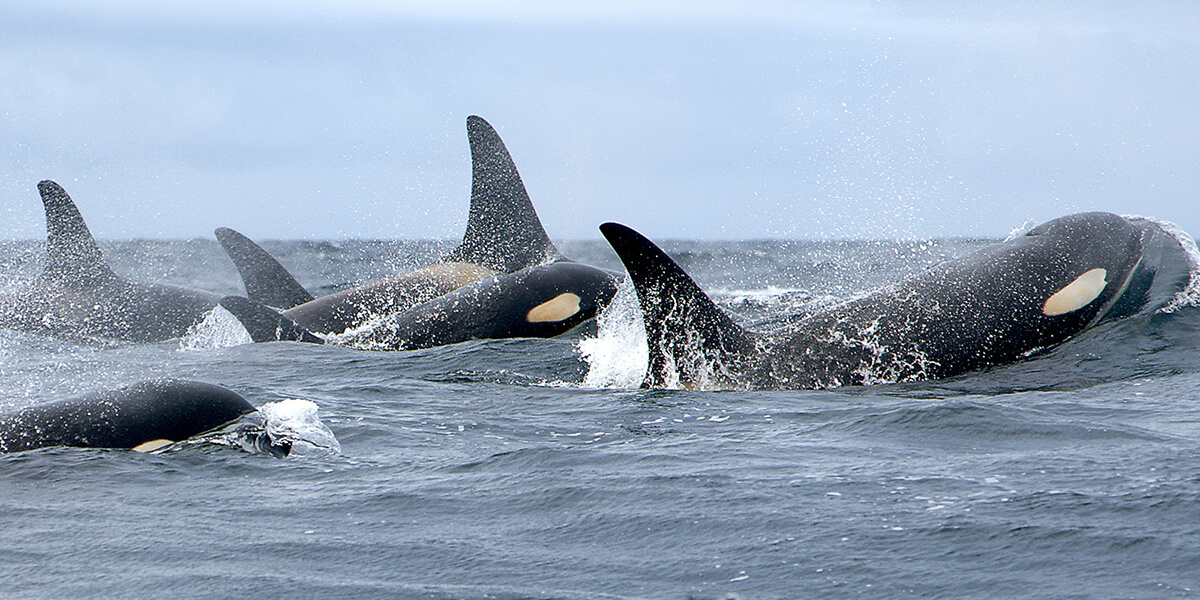
Southern Resident killer whales.
© Holly Fearnbach, NOAA.
Better conservation practices
There are many different factors that influence an ecosystem. The study identifies pinnipeds as one of the potential reasons for a continued decline in Chinook salmon populations, but everything needs to be considered for better conservation practices.
“I think that the ecosystem-based approach should be used more extensively in future research because an ecosystem is not only one species — it’s the sum of interactions,” said Couture. “When developing new conservation measures, it’s important to try and understand those different linkages between components of the ecosystem.”
“Any policy decision to manage pinniped populations so as to enhance salmon for both fisheries and support of whales must be treated as a management experiment with uncertain outcome,” said Walters. “What is clear from the models is that simply reducing fisheries will not substantially improve food resources available to the whales.”
The combined effects of predation, fishing, and ocean productivity on salmon species targeted by marine mammals in the northeast Pacific“, was published in PLOS ONE.
Tags: Carl Walters, IOF alumni, IOF students, killer whales, marine mammals, orca, Pacific, Pacific Ocean, pinnipeds, Research, salmon, sea lions, seals, walrus, whales